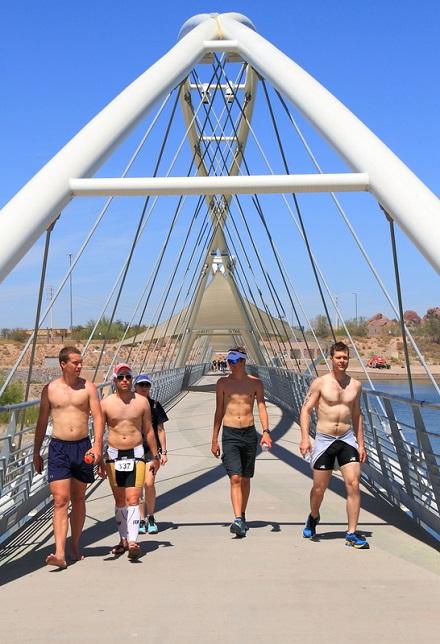

A list of the 31 schools at the Divisions I, II and III level can be found here. Under its emerging sport status, triathlon has a 10-year window to prove continued momentum in order to become an official NCAA sport. Triathlon entered its emergent status in 2014, meaning that by 2024, at least 40 NCAA Division I, II and III institutions must adopt the sport at the varsity level for women.
And the fact that in five years, it has surpassed the three-quarter mark bodes well.
“While we’re very confident we will hit 40, we can still achieve full-fledged NCAA Championship status by 2024 even if we haven’t, as long as we are showing continued and sustainable progress towards the goal,” Caryn Maconi, USA Triathlon’s communications manager, told SDM in 2018.
While the sport is not experiencing the same meteoric rise as beach volleyball, it remains popular and is continuing to grow. USA Triathlon has aided that growth by offering three-year grants for eligible college programs. The addition of the Hampton women’s triathlon program is made possible through a $225,000 grant from the USA Triathlon Foundation, which was reserved for the first HBCU that added the sport at the varsity level in a proactive effort to increase diversity in collegiate triathlon. The grant will be distributed over a five-year period and may support travel, equipment, coaching, scholarships and other expenses related to building a sustainable varsity program. (All other varsity women’s triathlon programs, including future HBCUs, have the opportunity to apply for the standard USA Triathlon Foundation Women’s Emerging Sport Grant.)
In addition, the organization is working to reward individual students for their start-up work in college triathlon. USA Triathlon created the Truxes Model Scholarship to award $1,000 scholarships to current college students to write proposals for NCAA institutions (Division I, II or III) whose institutions officially commit with USAT to add the sport.
The growth of the sport is adding up to increasingly measurable economic impact. As a case study, USA Triathlon reported to SDM that at its April 2017 USA Triathlon Collegiate Club and High School National Championships in Tuscaloosa, almost 98 percent of participants used lodging, resulting in close to $1 million economic impact in that area. The total economic impact (including the lodging figure plus shopping, attractions, dining, rental cars and more) came to more than $2.1 million.
Women’s triathlon is a fall sport, and the varsity season includes three Regional Qualifiers followed by the Women’s Collegiate Triathlon National Championships. Races are sprint-distance, featuring a 750-meter open-water swim, draft-legal 20-kilometer bike and 5-kilometer run.
Men’s Programs
While the women’s triathlon is the side receiving the most support presently, expect collegiate men’s triathlon to be a wave of the future as well. USA Triathlon is keeping its focus on the women’s effort until the sport is fully successful and firmly positioned at the NCAA level for women. In the meantime, destinations and event owners can expect to see collegiate men’s participation at the club level.
The projection is for college multisport to continue its rise. Working to attract this demographic early and promoting opportunities for students to register can help create the reputation of a student-friendly event that continue to grow and create positive returns.
SDM will continue to follow the development of the issue – and of the sport.

